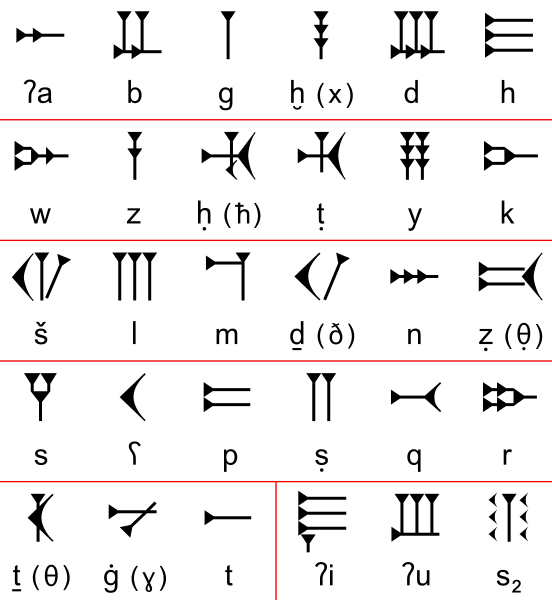Communauté • Livre d'or
 Actualités, astuces, interview... Venez lire la gazette de ce printemps de Vikidia !
Actualités, astuces, interview... Venez lire la gazette de ce printemps de Vikidia ! 
Fichier:Ugaritic-alphabet-chart.svg
Aller à la navigation
Aller à la recherche


Taille de cet aperçu PNG pour ce fichier SVG : 552 × 600 pixels. Autres résolutions : 221 × 240 pixels | 442 × 480 pixels | 707 × 768 pixels | 942 × 1 024 pixels | 1 884 × 2 048 pixels | 622 × 676 pixels.
Fichier d’origine (Fichier SVG, nominalement de 622 × 676 pixels, taille : 28 kio)
Historique du fichier
Cliquer sur une date et heure pour voir le fichier tel qu'il était à ce moment-là.
| Date et heure | Vignette | Dimensions | Utilisateur | Commentaire | |
|---|---|---|---|---|---|
| Actuel | 13 mars 2012 à 16:23 |  | 622 × 676 (28 kio) | wikimediacommons>AnonMoos | tweaking crossbar of ħ |
Utilisation du fichier
La page suivante utilise ce fichier :
